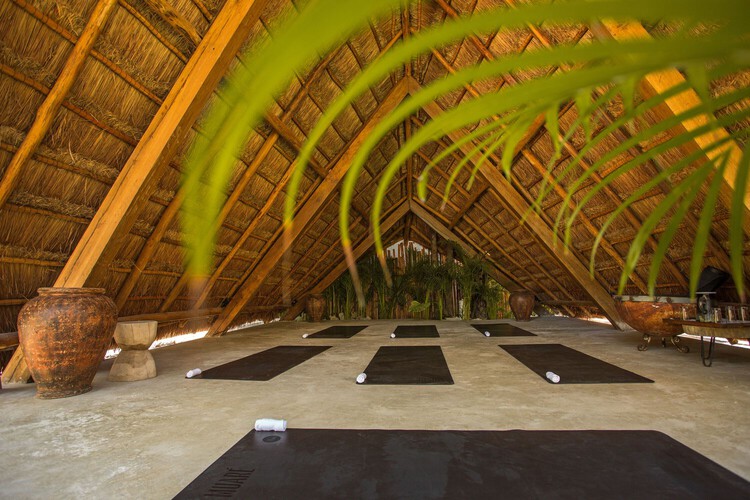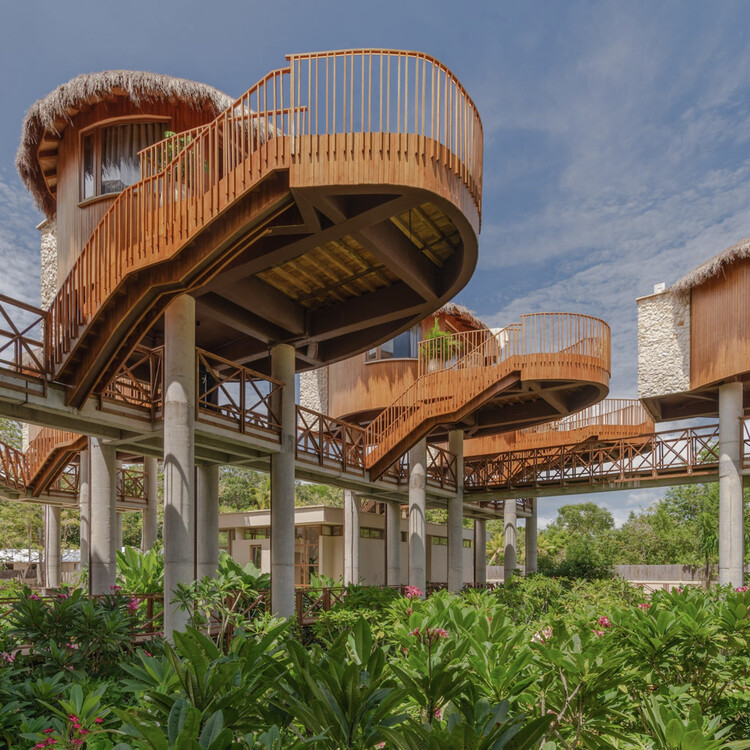
Many people living in large urban centers have, at some point, wished to trade the chaos of city life for the calm and tranquility of nature. As the desire for such experiences grows, Latin American countries' tourism and hospitality sectors have been investing in resorts nestled within forests. Inspired by eco-tourism, these retreats are designed to blend seamlessly into their surroundings, using local materials and traditional techniques that respect the ecosystem and promote sustainability.
Staying in the Latin American jungle offers a rare opportunity for solitude and reflection. Given the delicate nature of these ecosystems, human interventions must be made with sensitivity and respect. As part of this approach, many hotels and lodges embrace regenerative tourism, aiming to preserve the natural environment and foster social inclusion, stimulate local economic development, and support environmental conservation, all while offering an inspiring setting.
Next, discover 7 lodges and hotels that stand out for their innovative architectural solutions and thoughtful integration into nature.
Related Article
Architecture for Glamping: Embracing Nature with ComfortBoca de Agua Hotel / Taller Frida Escobedo
Bacalar, Mexico

This new hospitality project offers treehouse accommodations that float on pillars to avoid covering the ground and reduce the environmental impact. The spaces are designed to allow guests to share space with the mostly intact jungle, including the wildlife that freely roams the property.
Hotel Muaré / Taller de Arquitectura Viva
Tulum, Mexico

The architectural style evokes Central American cultures and connects them with the present using contemporary solutions mixed with local materials of low ecological impact such as stone and wood. The entire construction is designed to age naturally over time and tell its own story.
Hotel Aimarawa San Antero / 3mas1
San Antero, Colombia

The hotel was designed in different tiers, with the volumes rising on stilts as they approach the sea. This strategic solution helps mitigate the potential impacts of flooding caused by climate change. Additionally, the facilities were planned to boost the local economy by creating jobs for the nearby community and providing stable income opportunities for local artisans.
COCO Art Villas Costa Rica / ARCHWERK + Formafatal
Praia Hermosa, Costa Rica

The main construction material is local tropical wood, complemented by a tent canvas and metal elements. Rational construction is the basis of the design. It creates the form and atmosphere by itself, without needing any added decoration.
Ani Nii Shobo Lodge / Sandra Iturriaga + Samuel Bravo
Pucallpa, Peru

Ani Nii Shobo, big house of the forest in Shipibo language, is a healing center and nature reserve based on the traditional medicine of the Shipibo people. The project is based on the use of local materials such as capirona and quinilla wood and irapay palm leaf roofing.
Mirante do Gavião Amazon Lodge / Atelier O'Reilly
Novo Airão, Brazil

The project was developed with a sustainable approach, making use of the local climate, materials, and construction techniques. The riverside community has a strong tradition of building wooden boats, with this knowledge passed down through generations. However, due to a shortage of local labor, this craftsmanship was replaced by the design of a hotel that resembles an inverted boat.
Hotel Bardo / Taller de Arquitectura Viva
Tulum, Mexico

The architectural style represents contemporary Mexican constructions mixed with local materials of low ecological impact and blended with the surroundings, seeking to be part of the natural context of the Mayan jungle, aging alongside it.












